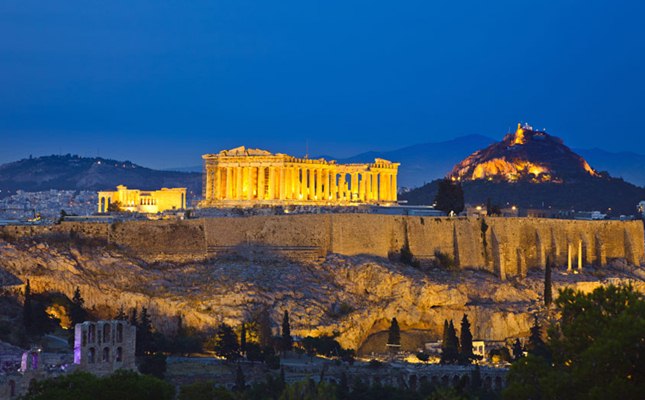[fshow photosetid=72157632518499288]
Growing up as a third culture kid has its advantages, my favourite being exposure to a whole world of cultures since a young age – before I even knew the word “culture”. Admittedly, the constant shuffle of friends in and out of international schools was unsettling at the time, but thanks to Hi5, Friendster, Myspace, and then Facebook through the years, reconnecting with old friends is but a click away.
Now that we’re all grown, the global scattering of friends which once brought tears, has now turned around to work nicely in our favour – wherever the wind blows, more often than not there’s the offer of a catch up drink and a friendly guide.
As I was winding and Instagramming (obviously) my way through Turkey, a blast from the past commented on my Facebook post on the Theatre at Ephesus. It was Lucas, an old college friend and he followed his “Like” with an invitation to Greece that said, “we have one of those too”. Greece wasn’t on the list for this trip, but I thought: “what the hell, might as well make a detour”. We decided to meet in Kos and I must admit that I never realized how close Greek territorial islands are to Turkey – at the risk of stepping on patriotic toes, Greek islands are pretty much Turkish offshore islands. I took the fast ferry from Bodrum to Kos. Total travel time? But a breezy 20 minutes across the Aegean Sea.
After a few days on the island catching up with Lucas, we fled the tourist throngs and hopped on a quick flight to Athens, where we scoured for tours. I’m usually not the organized tour type of traveller, but when you have limited time with a list of must-sees, being herded without having to keep an eye on the clock is strangely comforting. We booked ourselves on a day trip that combined two ancient sites – the ruins at Mycenae and the famed amphitheater at Epidaurus.
Myth and Reality
I can’t say I know much about Greek mythology, but I can’t deny its draw neither, in a “I can’t help wanting to know who did what” kind of way, not unlike a soap opera. Enter online research. Epidaurus is known as the birthplace of Asklepios, son of Apollo depicted as holding a serpent-entwined staff. Being the God of medicine, I now know why hospitals use this imagery. Love it when the dots connect.
First stop was Mycenae in Peloponnese, one of those “how did they build this fortified city back in 2,000 B.C.” type of wonders. Well apparently it was not that difficult if it was founded by none other than Perseus, heroic slayer of Medusa and saviour (and later hubby) of Andromeda. The Lion Gate is not magnificent in the sense of ornateness or sheer size, but looking up at the two headless lionesses and taking the symbolic step into the citadel sends your heading spinning with wonderment. Walking around, it really is something to set the imagination free as you theorize what colour was the wood that once made up the entrance doors, who was buried in the numerous domed beehive tombs, and whether or not the vaulted tomb really belongs to Clytemnestra, the femme fatale consort of King Agamemnon.
Impressive Achievements
Mid-tour, we pondered the family saga – husband sacrifices daughter, wife kills husband, and son kills wife – not very functional! But then we were beckoned to continue the journey to the Ancient Theatre at Epidaurus, the serendipity that brought me to Greece in the first place. There’s not much to wax lyrical about the Greek theatres, except that they are impressively grand, with rows and rows of grey seating gracefully and symmetrically laid within stunning lush surroundings, and designed during the fourth century B.C. Mind-boggling.
The acoustic qualities were also something that intrigued both of us. With the tour guide encouraging us to split up and give it a try, Lucas and I took turns testing the acoustics by reciting obscure lines from huge distances. Apparently it’s omething to do with the limestone seats, apparently, but the sound travels impeccably. Again, how did they figure that out way back when? We also visited the adjacent archaeological museum and the nearby Sanctuary of Aslepios, both educational, before returning home.
Greece really does awash one in wonder with the intense history behind all the monuments. It’s only been a few months and I already hear the other ancient monuments whispering their stories and begging for a visit. Next summer, I’m going to relive history and catch a live performance at an ancient theatre.
Thousands of years has left about 60 archaeological sites and 17 UNESCO Monuments in Greece. Here are some worth checking out:
- Acropolis of Athens, representing the epitome of Greek civilization
- Delphi, from where the mysterious Delphic oracles helped shape history.
- Ancient Olympia, birthplace of the Olympics,organized to humor Zeus, whom the site was dedicated to.
- Epidaurus, where the art of performance art is still celebrated to this day.
- Mycenae, Agamemnon’s ancient kingdom, a city in the Iliad.

